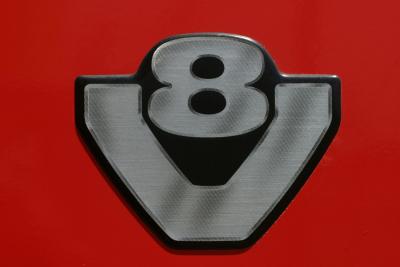
Since the days when the V-8 engine was invented, most engines below 350 cubic inches are called "small blocks." Hundreds of different small blocks exist from various manufacturers. For all small blocks, however, the valve springs have to be strong enough to withstand the constant opening and closing of the valves. For a racing engine, the specifications are even more rigorous. Understanding how the springs function helps you understand their importance.
The first function of the spring is to close the valve tightly. If the spring is too weak, the valve will simply rattle, allowing gases to escape. If the spring is too strong, the pushrods will bend instead of pushing on the opposite side of the rocker arm. The strength specifications of springs fall within a very narrow range. For this reason, design engineers look at all the factors of valve motion when specifying the strength of springs.
Valve float is a significant problem in high performance engines that spin at high rpm. What happens is as the rpm increase, the valves starts to lag behind the rocker arm. In essence, the spring closes the valve too slow. This leads to eventual engine self-destruction. When the valve is finally traveling up, the rocker arm is already on its way back down. The valve and rocker arm slam into each other, instead of a smooth transition from closing to opening. Another occurrence is because the valve is closing too slow, the top of the piston slams into the valve. This can shatter the piston, valve, or even the connecting rod due to the tremendous forces generated. Experts at "Circle Track Magazine" states that achieving the right balance in the valve spring strength to prevent valve float is difficult. A high performance engine builder has to look at all the components in an engine when designing an engine, and not just the valve springs. "Circle Track Magazine" reports that Comp Cams developed a special spring that reduces valve float by a unique conical design. For a stock engine, valve float is not a problem, since they do not spin at high rpms.
Spring bind is a problem that occurs when high lift cams are used instead of stock cams. A stock engine designer specifies a certain spring height for a valvetrain. When you switch from a stock cam to a high lift cam, the spring is compressed all the way. If the cam pushes past the point of total compression, the pushrods will bend. Experts at Jim Rivard GM Parts highly recommend you check for spring binding when installing a high lift cam on a GM small block.
To give you an idea of the spring pressures involved, a small block Chevy engine has an opening pressure of 240 pounds. Its resting, or unopened, pressure is 85 pounds. A small block Ford has a opening pressure of 320 pounds, with a resting pressure of 95 pounds. Bear in mind these are stock factory specification. For high performance engines, different springs with different pressures are necessary. A qualified engine designer sets the opening and resting pressures for the springs.